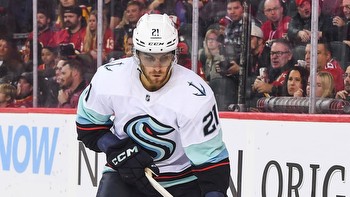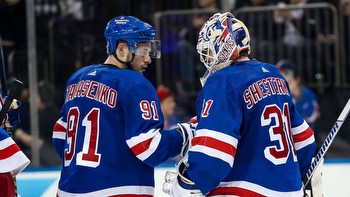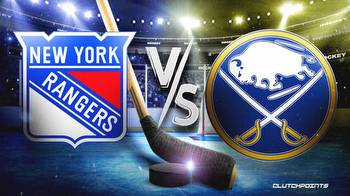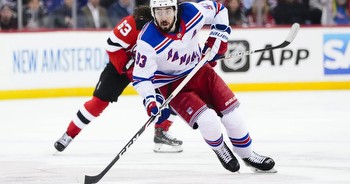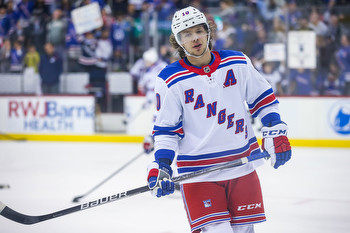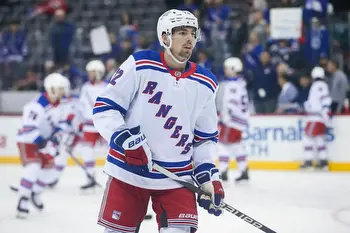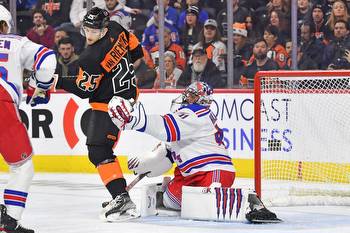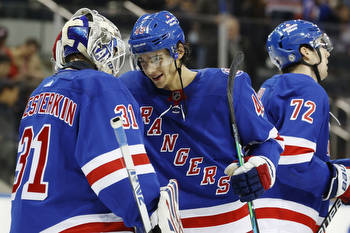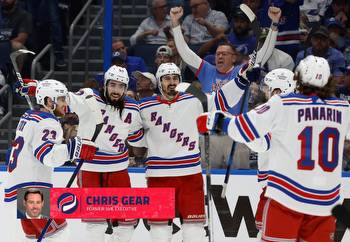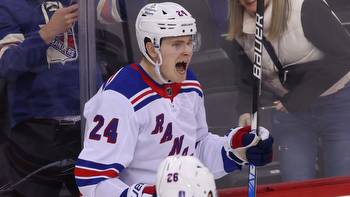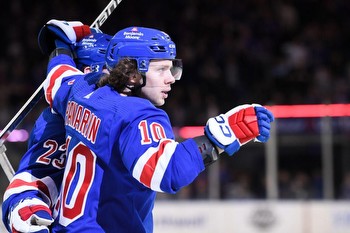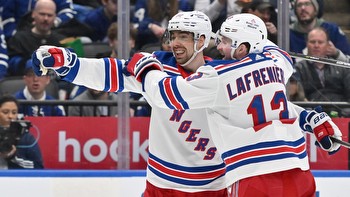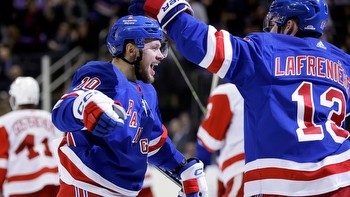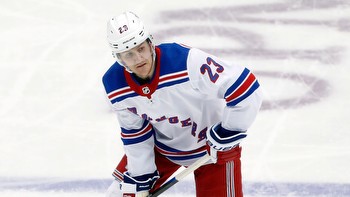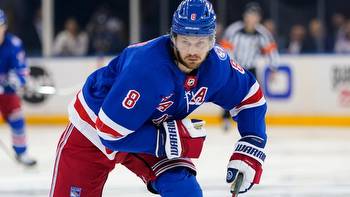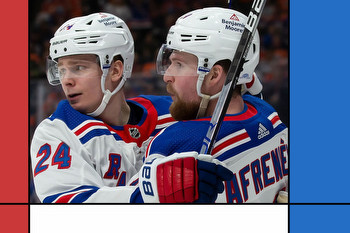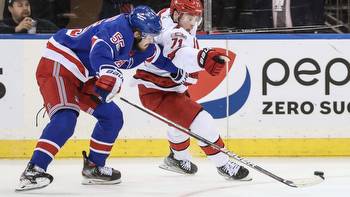What the Rangers need to do to make season ahead a success

Read the expert take on the Blueshirts
The Rangers return to the ice this month with another season of high expectations ahead of them.
Going from a captivating Eastern Conference Finals finish in 2021-22 to a disheartening first-round exit in ’22-23, the Rangers are caught somewhere in the middle of a Stanley Cup-contending team and a club that still needs to prove itself.
So what does a successful ’23-24 season look like for the Rangers?
If we’re measuring it in playoff results, the Rangers will have to at least make it out of the first round to feel like it wasn’t a total wash. That’s a bare minimum, and totally attainable, expectation for the Blueshirts to be facing.
Another first-round exit would set the club back and bring the team’s genetic makeup into serious question.
It would also make the Rangers’ run to the conference final two seasons ago look more like a fluke.
As inspiring as that run was, it set an extremely high bar in a short amount of time for an organization that was considered to be in a rebuild not long ago.
At the time, they weren’t exactly expected to go that far that fast at all.
Now, the Rangers are in a position where anything less feels like a colossal disappointment.
If the postseason results aren’t there, however, there are certainly other factors that would classify this season as a partial success.
Consolation prizes
With Peter Laviolette now behind the bench, how the Rangers adapt and gel under new leadership will be under a microscope. A foundation needs to be laid down under the new coaching staff and the rest of the team, one that is sturdy enough to build upon in future seasons.
If Laviolette can show that he has the Rangers headed in the right direction, it could soften the blow of a shorter-than-desired postseason.
Breakout seasons for Alexis Lafreniere and/or Kaapo Kakko would also ease the pain of another early playoff exit. To know that the Rangers’ young talent is capable of leading the charge for years to come should put some people at ease.
The NHL, however, is a results-driven league.
The Rangers are technically only a season into their so-called championship window, but with an aging core that has now been given an aging supporting cast due to cap constraints, the opening doesn’t appear to be as big as it once was.
Mailbag
Recently I asked for questions on my Texts from the Blue Seats text-message conversation with Sports+ members (join here). Here are the answers to some queries that caught my eye:
Is Patrick Kane coming back to the Rangers?
— Everyone
My lovely Subtext followers, I don’t know how many times I can write it. I don’t know how many times my dear colleague Larry Brooks can write it: The answer is almost certainly no. The likelihood of Kane re-signing with the Rangers is extremely, extremely low. You can never say never in this business, but if I were a betting woman (I’m not), I would bet a lot of money that Kane will not be with the Rangers in ’23-24.
Will the team’s style of play be noticeably different going from Gerard Gallant to Peter Laviolette?
— John Oliva, Richard Ramsey
Every player and coach will tell you that the NHL is a copycat league, so don’t expect to see an absolute 180-degree change in the team’s play. The Rangers are built how they’re built, which means we’re not going to see the club that always looks for the extra pass/prettier play/highlight-reel shot suddenly start grinding out dirty goals every play.
That being said, I expect more structure and purpose to the Rangers’ game under Laviolette. Chances are, Laviolette will push the Rangers toward the aggressive, puck-possession style of hockey that he’s taught in the past.
Who’ll have breakout year?
— Randall Bingham
I’m watching Kaapo Kakko.
Do you know when training camp starts?
— Giuseppe Mignosa
Late September, in roughly two weeks.
Why spend under $1,000,000 per player in free agency when you could still have Blake Wheeler, one other and maybe two or three at $1.5 million or $2 million that were way better. Even getting Tyler Motte at $2 million x 2 would’ve been preferred!! Also why Jonathan Quick, when Jaroslav Halak was fine!!
— Al Fromo
Respectfully, I’m not sure what cap you’re looking at, but president and general manager Chris Drury handed out contracts with the necessary terms and amounts to remain cap-compliant and still round out the Rangers lineup. Signing Wheeler for $800,000 (sans performance-bonus incentives) was a major get, one that not many teams would be able to finesse unless they were in the same competitive position as the Rangers. Had Drury thrown around a couple $1.5 million or $2 million contracts, the Rangers probably wouldn’t have enough NHL-caliber players to plug holes in the lineup and provide depth on the roster.
Tyler Motte could certainly be a $1 million per year player for many teams in the NHL, but not the Rangers, who are not in a position to be paying too much for fourth-line minutes. Halak presumably wanted his same $1.5 million contract he had last year, which was simply not an option for the Rangers, again, because of their cap situation. That’s why Drury pivoted to Quick, whom he was able to lock in for $825,000 (plus performance bonus incentives) because of his recent dip in play.
Will the cap be raised, giving the Rangers some room later in the season?
— Anthony LaBella
The cap is set to go up by $1 million this season, to $83.5 million. It’s projected to increase by $4 million for ’24-25 to $87.5 million.
Big year for the young forwards, but my question is re: the D. Can Erik Gustafsson really make the team as the sixth defenseman/second PP QB or is his D too much of a liability? Also, wouldn’t it curtail the growth of Zac Jones or Matthew Robertson?
— Jeff Garrigan
The expectation is that Gustafsson will have an edge over Jones for the sixth defenseman role, especially because of his ties to Laviolette from Nashville. He’s bigger, more experienced and may fit the bill of what Laviolette wants on the back end. Still, Jones figures to be a big part of the conversation for many reasons. The Rangers aren’t looking to put Jones on waivers out of training camp and the UMass product will certainly get a chance. Robertson isn’t so much in the mix at this moment in time.
The Rangers aren’t necessarily focusing on what’s best for Jones’ development because they have to prioritize winning games. The organization does need to find out what they have in Jones, however, whether it be for a long-term role or to explore his trade value.

